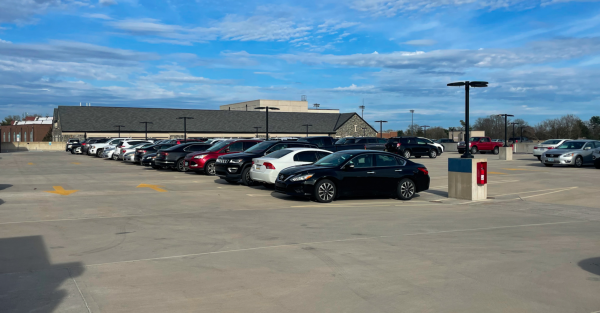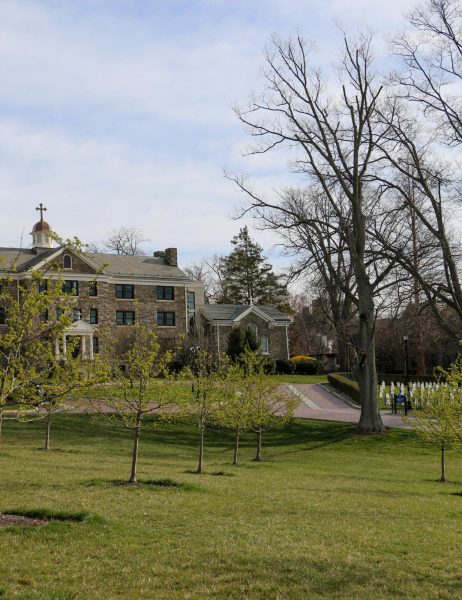The media needs to start introducing more diversity to the screen
January 29, 2015
According to the U.S. Census Bureau, 50.8 percent of the population is female. Of this population, 63.8 percent is Caucasian, 12.7 percent is Black, 15.9 percent is Hispanic and 5.14 percent is Asian.
That’s the real world. Now, let’s talk about how it all breaks down in film and television.
According to the Status of Women in the U.S. Media 2014 Report (released by the Women’s Media Center), in the 100 highest grossing films of 2013, about 30 percent of all major characters were female. Of these women, 73 percent were Caucasian, 14 percent were Black, 5 percent were Latina, 2 percent were of mixed race, 3 percent were Asian and another 3 percent were of an animal or alien species.
As Susana Polo of The Mary Sue put it, “In 2013, American audiences were about as likely to see a woman of an animal species or completely made up race as they were to see an Asian woman.”
Just let that sink in for a bit.
Looking back at the top 100 films in 2012 and 2013, the same study found that women only made up 15 percent of protagonists in those movies and had fewer speaking roles (only 28.7 percent) than in any year since 2007.
Lest you think that these issues only exist on screen, the research indicates that there is a distinct lack of diversity behind the camera as well— when it came to the production of the 250 top-grossing domestically made films of 2013, women accounted for just 16 percent of all directors, executive producers, writers, producers, editors and cinematographers.
Clearly, we have a problem here. The U.S. is a melting pot of races, genders, sexualities, and socioeconomic backgrounds, but you wouldn’t be able to tell that from what’s on TV. We have the opportunity to use fiction to make ourselves more educated about the real world, and yet the media paints a woefully homogeneous picture.
A lack of diversity in media has harmful implications for everyone: If minority populations aren’t properly and positively represented in visual media, we increase the chances of people thinking and acting in terms of stereotypes and prejudice. Merely including people of diverse backgrounds is not enough, of course, because there is a tendency to create caricatures (think of Gloria from “Modern Family” or Raj from “The Big Bang Theory”) instead of meaningful characters.
So how can Hollywood fix this problem? It’s actually quite simple: Stop perpetuating the status quo of a fantasy world, and start writing for the world we live in.
All it takes is a little effort. Write characters that are representative of the population they’re a part of. For example, if you’re talking about modern-day New York City, include people of different races and sexualities (I’m looking at you, “Girls”). Start hiring directors and producers who are female and people of color. Let me reiterate, this isn’t to gain Hollywood brownie points for including diverse characters. This is taking a step forward to situate these stories in the world we all live in.
Luckily, there are people in the industry who are making this effort, and it’s paying off. According to a 2013 UCLA study of entertainment TV, “diversity increases viewership and thus bolsters the corporate bottom line,” so there’s really no excuse. We still have a long way to go, but it’s important to remember that we are making progress.
Take for example, Vince Gilligan, the creator, head writer and executive producer of “Breaking Bad,” who decided to include a major character with cerebral palsy in his script because he was “trying to show the audience something they haven’t seen much.” In doing so, he opened the door for RJ Mitte, an actor with cerebral palsy, to audition and eventually get the role. Mitte is now the Screen Actors Guild’s spokesperson for actors with disabilities, and works to educate people about his disease.
Over the past decade, a handful of popular shows—including “LOST”, “Grey’s Anatomy,” “Orange is the New Black,” “Transparent,” “Brooklyn Nine-Nine,” “Jane the Virgin,” “Gotham,” and “How to Get Away with Murder”—have all received critical acclaim for positively representing minority populations without resorting to often-offensive stereotypes. These shows, while they may not be perfect, deserve praise because they illustrate that we live in a world where men and women of all different races and sexualities live and work together every single day.
As Gabourey Sidibe, the Oscar-nominated star of the 2009 film “Precious”, said, “If I get to see myself on screen, then I know that I exist.”
There are millions of talented female and “People of Color” actors , producers, directors, and writers who could revolutionize film and television, if only we gave them the chance. (As an aside, please note that I’m not belittling the abilities of the men and women who are in our shows and films now.) Think about the healthy competition that would arise if we had proper representation and cared more about telling diverse stories.
The media is a powerful tool that can be used to educate and inform, and it’s high time we start using it properly.
In today’s day and age of constant media engagement, what we see on TV and in movies can often feel like real life. It should start being depicted as if it were.





